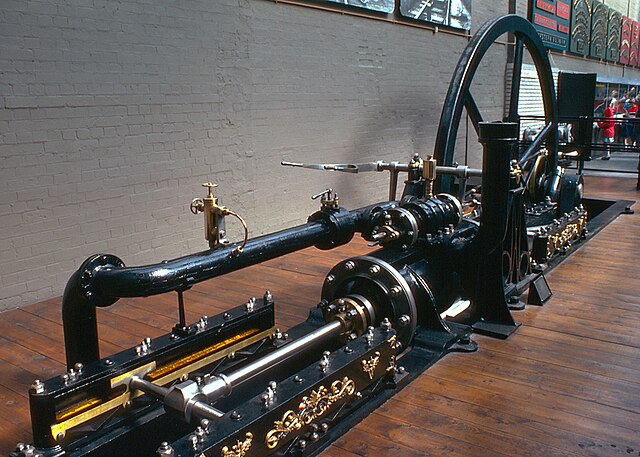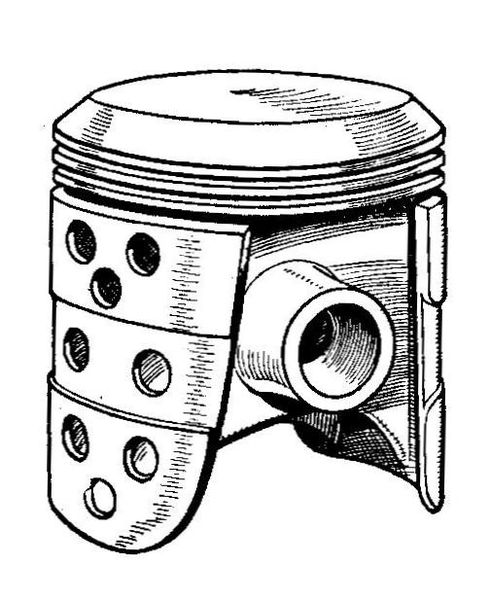In a piston engine, a piston rod joins a piston to the crosshead and thus to the connecting rod that drives the crankshaft or the driving wheels.
The vertical piston rod of a large beam engine at Dorothea Quarry
Stationary steam engine from Swannington Incline. Note the tail rod and secondary crosshead
Small steam locomotive, with piston rod visible between the cylinder (green, left) and the crosshead (right). Note the small brass lubricator (the leftmost), whose function is to lubricate the piston rod and stuffing box, through a short oil pipe
Czech class 252.0 locomotive, with a tail rod
A piston is a component of reciprocating engines, reciprocating pumps, gas compressors, hydraulic cylinders and pneumatic cylinders, among other similar mechanisms. It is the moving component that is contained by a cylinder and is made gas-tight by piston rings. In an engine, its purpose is to transfer force from expanding gas in the cylinder to the crankshaft via a piston rod and/or connecting rod. In a pump, the function is reversed and force is transferred from the crankshaft to the piston for the purpose of compressing or ejecting the fluid in the cylinder. In some engines, the piston also acts as a valve by covering and uncovering ports in the cylinder.
Pistons within a sectioned petrol engine
Internal combustion engine piston, sectioned to show the gudgeon pin.
Slipper piston
Two-stroke deflector piston








